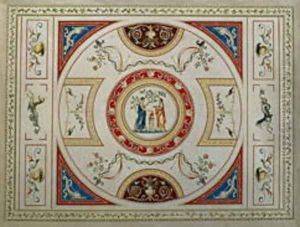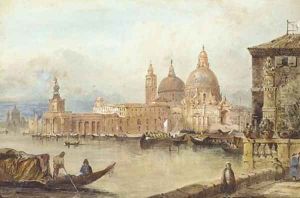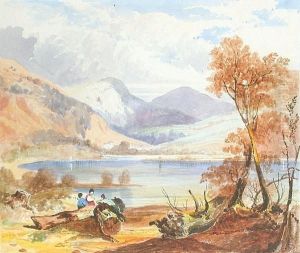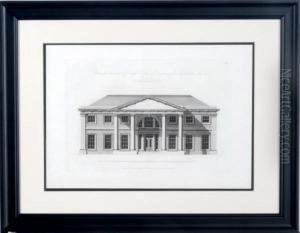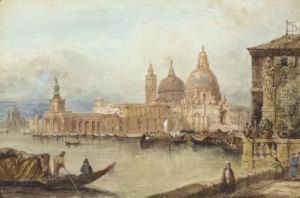George Richardson Paintings
George Richardson was a British architect and draughtsman, known for his work in the neoclassical style, which was prevalent during the late 18th and early 19th centuries. Born in 1736 or 1737, the exact date is not well-documented, Richardson's early life is somewhat obscure. He emerged as a significant figure in the British architectural scene, especially after his association with the prominent Scottish neoclassical architect Robert Adam.
Richardson worked for Adam for a number of years and was heavily influenced by his style. During his tenure with Adam, Richardson contributed to the production of many important architectural drawings and designs. However, he was not only an employee but also a collaborator, and his work with Adam helped to solidify the neoclassical aesthetic in Britain.
After his time with Adam, Richardson began to establish his own practice. He published a number of influential books on architecture, including 'A Book of Ceilings' in 1776 and 'The New Vitruvius Britannicus' in 1802, which showcased contemporary British architecture and contributed to the dissemination of neoclassical design principles. These publications were important for the spread of neoclassical ideas and were used as reference by other architects and designers.
Richardson's contributions to architecture were not limited to his work with Adam or his publications. He also designed a number of buildings, although many of them were not executed or have been altered over time. His architectural legacy is therefore primarily through his drawings and written works, which continued to influence architects long after his death.
George Richardson died in 1813, leaving behind a legacy as an educator and promoter of the neoclassical style through his detailed engravings and publications. His dedication to the principles of classical architecture and his influence on British architecture during a period of stylistic transition are his enduring contributions to the field of art history.
